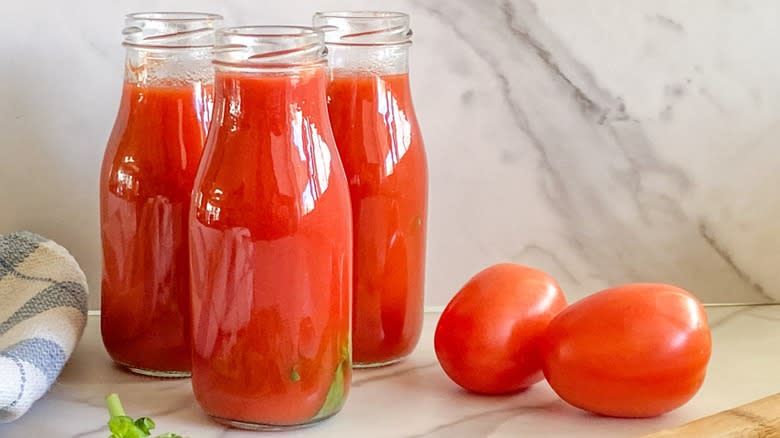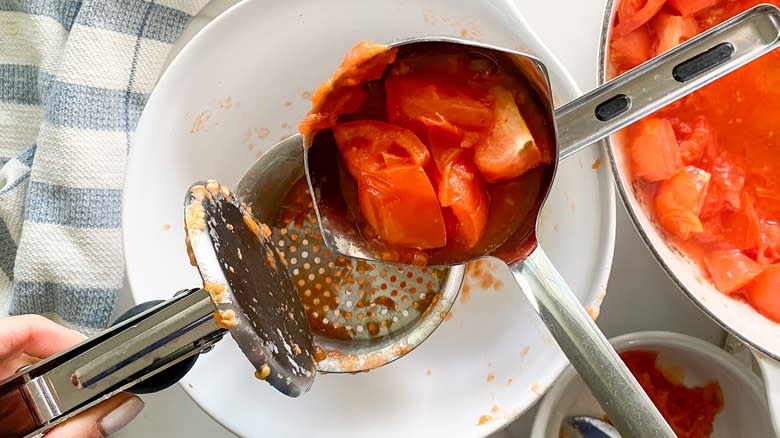Use A Potato Ricer For The Absolute Best Tomato Passata

While tomatoes are native to South America, they have become synonymous with Italian cuisine where they're the foundation for its most iconic dishes like pizza, pasta bolognese, and caprese salad, just to name a few. Despite the wealth of heavily seasoned canned tomato sauce and thick, caramelized tomato pastes you'll find in American grocery stores, Italians like to keep it pure and simple with tomato passata.
A common bottled product in Italy and Europe, tomato passata is essentially a smooth, strained, uncooked tomato purée with no additional seasonings, aromatics, or veggies. It's a homemade staple across Italy and a way for families to preserve the fresh taste of the summer's tomato harvest. While many Italian households have a food mill designed to mash tomatoes through a sieve, a potato ricer is the perfect substitute to create that smooth, seedless texture at home. Potato ricers have the same components as a food mill but they are more compact.
You can spoon small batches of lightly cooked, chopped tomatoes into its spherical chamber, and the slotted bottom will effectively rid them of their skins and seeds. If the potato ricer ceases to eject tomato juice, that's an indication that you need to remove the skin and seeds that have clogged the slots. Once you've run all the tomatoes through the potato ricer into a bowl, you can pour the juiced pulp through a fine mesh sieve back into the pot you used to boil them. This final filtration will rid the tomato passata of any seeds or larger chunks of pulp.
Read more: 13 Simple Tricks To Pick The Best Fresh Fruit Every Time
More Tomato Passata Tips And Uses

While the type of tomato used in tomato passata varies, the most important aspect of the main ingredient is its ripeness because the ripest tomatoes contain the sweetest, juiciest pulp. Whether you're using Roma, plum, or San Marzano tomatoes, just ensure that they are tender and soft. If you're stuck with hard, under-ripe tomatoes, you can speed up the ripening process by storing them on a sunny window sill or in a brown paper bag with a ripening banana.
Tomato passata encapsulates the bright, tangy flavors of fresh, ripe tomatoes, but heating the tomatoes in a pot for around 10 minutes is an important step that will loosen their skins, making them easier to process through a potato ricer. You can also reheat the strained pulp over the stove before jarring it to help eliminate a portion of the tomato's water content for a more concentrated tomato flavor.
You can use tomato passata the same way you would use canned tomato purée as a flavor and texture enhancer for soups, stews, and sauces. You can add it with broth for a brighter foundation for minestrone or white bean soup, add it to sautéed onions and garlic (finishing it with a sprinkle of oregano, basil, and thyme) for a delicious pasta sauce, or spread it over store-bought pizza dough for a more scratch-made approach to homemade pizza night.
Read the original article on Tasting Table.


